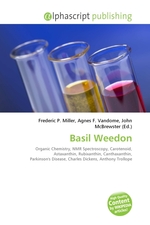Basil Weedon
Frederic P. Miller, Agnes F. Vandome, John McBrewster
бумажная книга
High Quality Content by WIKIPEDIA articles! Brassicaceae or Cruciferae, also known as the crucifers, the mustard family or cabbage family is a family of flowering plants (Angiospermae). The name Brassicaceae is derived from the included genus Brassica. Cruciferae is an older name, meaning "cross-bearing", because the four petals of their flowers are reminiscent of a cross. According to ICBN Art. 18.5 (Vienna Code) both Cruciferae and Brassicaceae are regarded as validly published, and are thus accepted as names for the family. contains over 330 genera and about 3,700 species, according to the Royal Botanic Gardens, Kew. The largest genera are Draba (365 species), Cardamine (200 species, but its definition is controversial), Erysimum (225 species), Lepidium (230 species) and Alyssum (195 species.) The family contains well-known species such as Brassica oleracea (broccoli, cabbage, cauliflower, etc.), Brassica rapa (turnip, Chinese cabbage, etc.), Brassica napus (rapeseed, etc.), Raphanus sativus (common radish), Armoracia rusticana (horseradish), Matthiola (stock), Arabidopsis thaliana (model organism) and many others.
Данное издание не является оригинальным. Книга печатается по технологии принт-он-деманд после получения заказа.
High Quality Content by WIKIPEDIA articles! Professor Basil Charles Leicester Weedon CBE, FRS (18 July 1923 - 10 October 2003) was an organic chemist and university administrator. Using magnetic resonance spectroscopy, he was the first to map the structures of carotenoid pigments, including astaxanthin, rubixanthin and canthaxanthin. He studied at a school in Guildford prior to studying chemistry at Imperial College, London in 1940, he was awarded his degree just two years later, aged 19. He remained at Imperial College, studying for a PhD before taking a job with ICI working on dyes in Blackley, Manchester. He returned to Imperial College in 1947 as a lecturer in organic chemistry and became a reader in 1955. In 1960 he was appointed the Chair of organic chemistry at Queen Mary College. In 1976 he became the 4th Vice-Chancellor of the University of Nottingham, he held the position until his retirement in 1988.
Данное издание не является оригинальным. Книга печатается по технологии принт-он-деманд после получения заказа.


